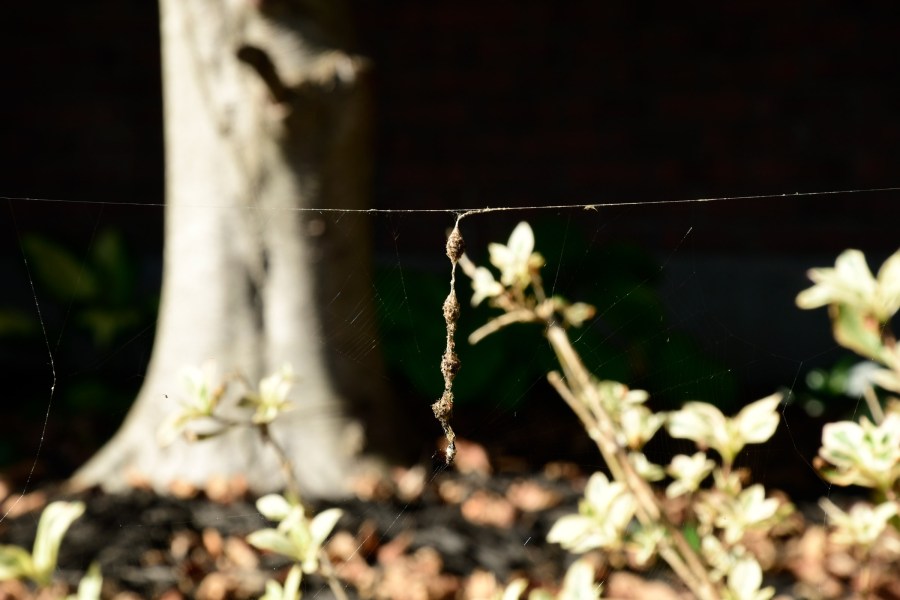Common Ohio Spiders Found During Fall
Early autumn mornings mean heavy dew. Heavy dew means a profusion of spider webs on your morning hike. Of course, the spider webs are always there, but the dew highlights the intricate works of art. There’s not enough room on the digital page to discuss all of the more than 600 species of spiders in Ohio, but below are three common spiders seen around this time of year. On your next morning hike, keep an eye out for these spiders and their webs.
Arboreal Orbweaver
The arboreal orbweaver (Neoscona crucifera) is one that seems to magically appear outside your front door every fall. They often make large webs of concentric circles near your porch to take advantage of bug-attracting porch lights. On an autumn morning, you might wonder where the spider came from, seemingly appearing out of nowhere. When in reality, it has been there all summer. Juvenile arboreal orbweavers make a web every night and take it down every morning, hiding themselves throughout the day (and keeping you unaware of their presence!). Those juveniles become adults in the fall and keep their webs up throughout the day. It is thought the shift in behavior is due to declining insect numbers as the weather cools.
Trashline Orbweaver
The trashline orbweaver (Cyclosa turbinata) is an easy one to spot. Look for a line of “trash” down the middle of the web. Look a little closer and you’ll see the trashline orbweaver hiding among the trash. The trash is actually bits of leaves, debris and the remains of the spider’s meals. They keep it in the web in order to camouflage themselves from predators and potential prey. As they say, one spider’s trash is another spider’s camouflage.
Bowl and Doily Spider
The bowl and doily spider (Frontinella communis) is easily identifiable by its multi-layered web. The “bowl” is on top and the “doily” is below. Above the bowl are “knockdown lines” composed of non-sticky silk*. Insects fly into the lines and fall into the bowl. The spider hangs beneath the bowl in wait for the insect and then bites the insect from below. The doily protects them from beneath. Imagine lying on your back waiting for food to fall from the sky. That’s the bowl and doily spider!
*Did you know spiders can spin six different types of silk? Each has its own purpose in web building, prey capturing and egg sacs. Perhaps another blog …
—
Paul Seevers
Nature Interpreter, Farbach-Werner Nature Preserve





